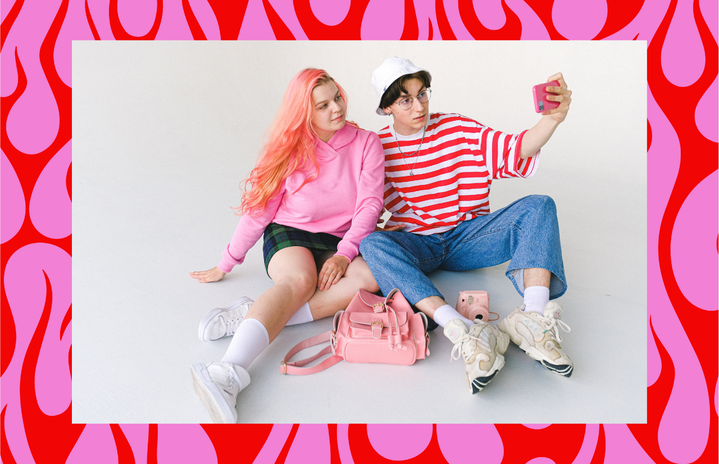You don’t need to be a fashion expert or have the world’s largest wardrobe to put together creative outfits that express your personality. Personally, I love setting up a mood with a color and then style my look around it: whether it’s with a new statement piece I want to show off, or I just dyed my hair a bright fantasy hue, using colors intentionally helped me have fun with fashion and even define my style.
That’s why, with just a basic, working knowledge of color theory, you can start putting together looks that are equal parts bold and colorful —that is, just in time for spring. But first off, what exactly is color theory? At a general level, color theory encompasses a series of guidelines and suggestions for combining colors. While there is no right or wrong way to mix colors, color theory considers how we perceive colors and therefore, what color combinations are more appealing to the human eye. This explains why color theory is so important in art, graphic design, film and all design-related fields in between, including, of course, fashion. The following are a series of examples of common color combinations to get you started.
So make sure to keep your color wheel close, and let’s get to it!
Complimentary
In the color wheel, complimentary colors are those that lie at exact opposite sides, named as such because they create a strong contrast and make each other stand out. While they might sound like unusual combinations at first (red/green and yellow/purple, I’m looking at you) they’re worth experimenting with. Complimentary color combinations are bold no matter what, so be ready to make a statement.
Tip: Complimentary colors are not absolute! Don’t be afraid to mix opposite colors and go for lighter or darker shades; especially if you’re into pastels. For example, matching green with pink (which breaks down into red and white) is an unexpected success every time.
Analogous
Analogous colors are right next to each other in the color wheel. Together, these colors create a sense of harmony because they’re similar to each other. Some common combinations of analogous colors are red/orange, blue/green, pink/purple.
Triadic and Tetradic
Can you combine more than two colors successfully? The answer is a solid yes! For those eager to take color theory to the next level, triadic and tetradic colors take into consideration the space between colors in the color wheel.
Firstly, triadic colors refer to three colors that are equally spaced in the color wheel —if you imagine drawing a triangle over the color wheel, the resulting colors are triadic. It’s no coincidence then that some of the most common triadic combinations are the three primary colors (red, yellow and blue) and the secondary colors (purple, green and orange). Similarly, tetradic colors work with four colors that form a rectangle over the color wheel, an example being red, blue, green and yellow.
Tip: Since both of these combinations involve multiple colors, you can use accessories creatively to bring those extra colors to your triadic or tetradic color scheme.
Monochrome
Even the most simple color schemes can also make a statement. All you need to do is pick a color (and no, white and black are not included). Monochrome looks, or looks built upon a single color, are both timeless and classy, and work exceptionally well in matching sets: whether you’re going for a crop top and skirt for a glam party or a blazer and matching pants for a formal event.
Tip: If you’re feeling edgy, combine different shades of the same color for a tonal look. If you want more of a challenge, try matching the exact colors of your outfit with your accessories for added boldness.


